
At the Open Society Foundations’ headquarters in Manhattan, philanthropic leaders and media makers gathered for Maladies and Miracles: Funding Media to Illuminate Health and Science, a day-long series of panels on health-related media coverage and storytelling projects.
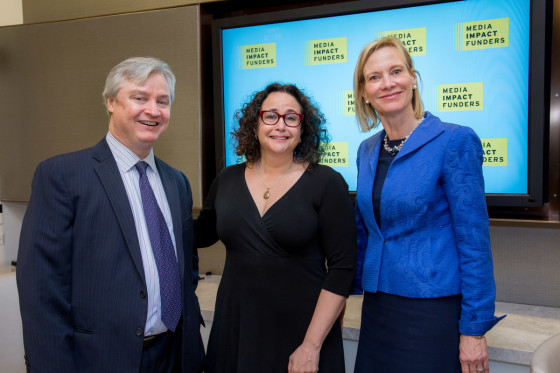
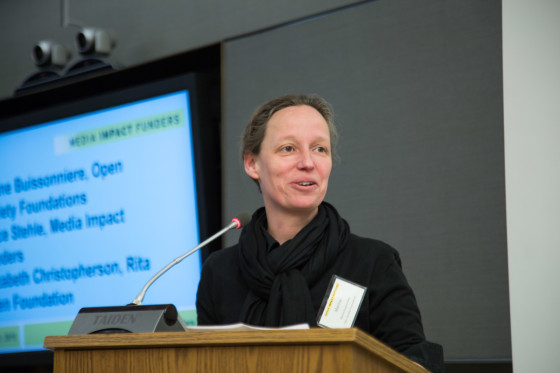
“For a living, I wake the dead.” – Ken Burns to Brooke Gladstone
Elizabeth Christopherson of the Rita Allen Foundation opened the day by noting that this was the launch of a larger conversation that MIF will be leading over the next several months. Asking how we can create more effective science communicators and health communicators, she noted that Rita Allen supports programming like this to inspire others to come to the table and get involved in this critically important work.
An Urgent Search
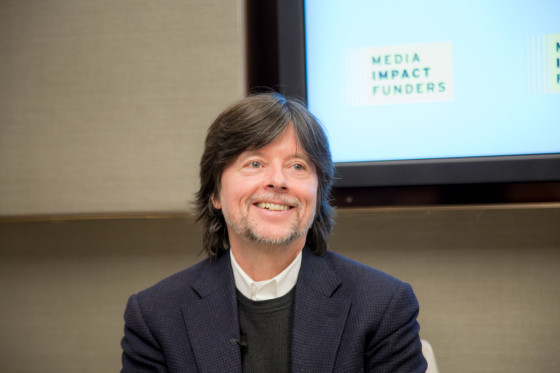
Famed documentary filmmaker Ken Burns was interviewed by On the Media’s Brooke Gladstone for the first session of the day, focusing on cancer. On the Media is presenting its own programming around cancer, including a special radio project with WNYC called “Living Cancer Series,” that is a companion to the latest documentary that Burns is producing, Cancer: The Emperor of All Maladies. He described the project as a personal effort inspired by losing his mother to cancer when he was just 11 years old. Burns stressed the importance of narrative as a way to drive action towards the development of better cancer treatments, describing the search for a cure as “probably the most important detective story on earth.”
See the dialogue here:
Burns explained he made the film, “to have a conversation with my mother,” adding a few moments later that, “If it is the emperor of all maladies, then we are the subjects of this tyrant, and we ought to be in the resistance movement.”
He continued, “We live in a media culture and we assume we’re active players, but we’re really passive receivers. I stayed in public media because we can actually get people to do things and I think we have an opportunity with this to not only activate interest and discussion, but the more important kind of interaction that comes with real action.”
While the story is enormously personal to Burns – and everyone in the room in some way – Gladstone focused on the importance of clearer public understanding about the science of the disease and the role media plays in that understanding.
She noted that there is a disconnect in the public mind between which cancers are most common, and most funded. For example, Leukemia is believed to be the 4th most common, but it’s actually the 10th. Gladstone went on to explain that people who get leukemia tend to be young, and bladder cancer patients tend to be old. That very difficult question about where to focus resources is never asked, but on the local level, a $2 million dollar grant to a researcher doing bladder cancer would create a bladder cancer researcher for life, whereas for breast cancer it’s a drop in the bucket. She made the case for better science journalism training to inform the conversation about what gets media coverage and attention.
Epidemic Distortions
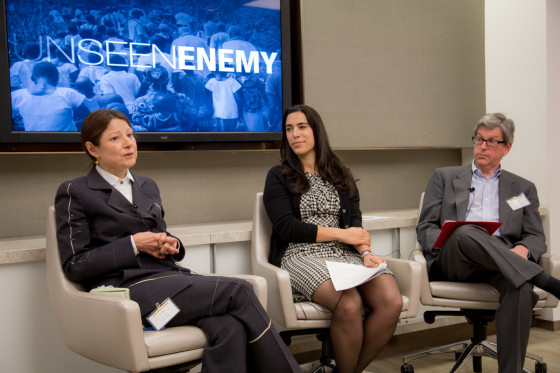
Lara Setrakian of Ebola Deeply and Janet Tobias, Producer, Writer and Director of Unseen Enemy, joined David Morse of The Atlantic Philanthropies for a discussion on media responses to Ebola. Coverage of the recent outbreak of Ebola in West Africa – and the sometimes comically hysterical reporting in America – contrasted with more thoughtful media, including Brooke Gladstone’s own notable reporting from Liberia. All lamented the US-focused panic that swept through the mainstream media, agreeing that the common narrative of the disease ignored the realities of other illnesses and the reality of Ebola outside of America.
“It takes time to do the story well,” said Tobias, “Which is why I spent ten weeks in Africa.” There, she found doctors on the frontlines with important perspectives to share, noting that she never would have been able to identify and contact them from a far-away newsroom.
Setrakian shared the story of her website, which was deliberately created as an in-depth, single topic news source in homage to the doctors and aid workers who passed away battling the disease. She said they built the site “like Ikea furniture — how many modules can we fit in that will present information on a given topic?” Both Setrakian and Tobias identified considerable information gaps in the coverage of epidemics, and discussed the importance of finding the right audiences in order to maximize the impact of their projects and associated issue campaigns.
The second half of the discussion — “Philanthropy and the Coming Epidemics” — featured Akwe Amosu of Open Society Foundations and Bob Ottenhoff from the Center for Disaster Philanthropy, and was once again moderated by David Morse.
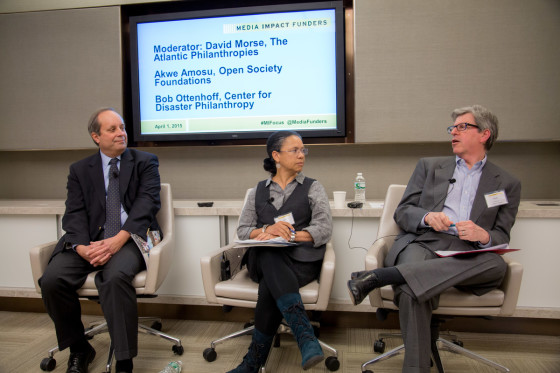
Amosu spoke of the $9.2 million Open Society Foundations put into various projects following the Ebola crisis, not just focusing on medical treatment but supporting the communities in West Africa that had been rocked by the epidemic. She noted two major concerns going forward: First, how to ensure sustainability for healthcare systems in poor and poorly educated communities; and second, the fact that there were virtually no West Africans involved in the conversations around the response to Ebola. The first, she acknowledged, was a complex problem with no “silver bullet” solution. The second, however, would require a focus on identifying the important voices on the frontlines of epidemics and bringing them into these important conversations, even if they are not already networked into the circles leading the response.
Ottenhoff lamented that the largest moment for philanthropy is at the attention-grabbing, opening moments of a disaster. He urged funders to consider the “full lifecycle of disaster,” explaining that 90 percent of all dollars given to disaster recovery are given within 90 days. “As donors, we forget there’s a story before the event, and there’s a story long after the event.” In the same vein, the types of crises that receive the most aid are those which are often the most visually dramatic — in 2012, most philanthropic disaster relief money responded to natural disasters and only 11% went to complex humanitarian emergencies, likely from only a few foundations.
Confronting Misinformation and Disinformation
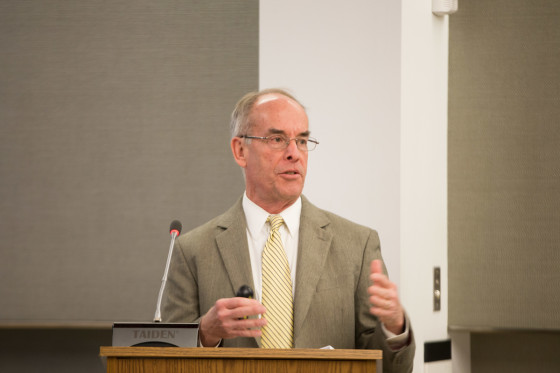
The next session opened with a presentation by Lee Rainie highlighting a recent Pew Research Center study on the perception gaps between scientists and the public on various scientific issues. While many of the differences in belief on issues such as climate change and genetically modified food fell along predictable partisan, religious, and educational lines, Rainie noted that the speed of news consumption in the digital age may be strengthening these gaps — “you can find confirming evidence online for the things you want to believe.”
Next, Geneva Overholser moderated a discussion with Alison Fitzgerald and Wendell Potter of the Center for Public Integrity. Fitzgerald pointed out two CPI reports — on pay-for-play black lung disease “experts” at Johns Hopkins University and corporate knowledge of carcinogen-laden products — as examples of foundation-supported journalism counteracting the harmful messaging that passes as scientifically sound research. She later admitted that, while successful, this style of reporting required a significant amount of time and funding that is not available in most newsrooms.
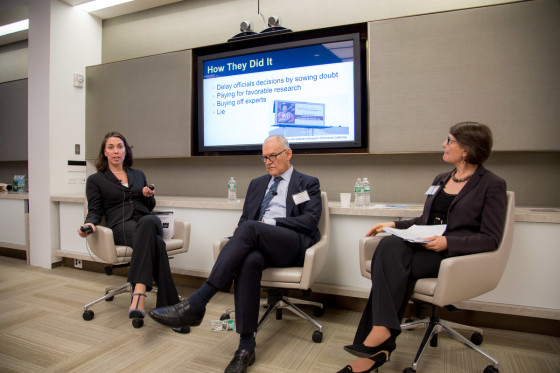
Potter relayed stories from his time in public relations for the insurance industry, noting that as newsrooms shrank, he noticed less and less scrutiny on the activities of his employers. His company was involved in the dissemination of misinformation smearing Michael Moore as a socialist in the lead-up to the release of Sicko, to counteract calls for universal healthcare in this country. Following a “crisis of conscience” that led him to return to journalism, Potter now combats misinformation in healthcare coverage.
Jeanne Pinder of ClearHealth Costs also gave a brief preview of her website, which allows healthcare consumers to share and compare prices on “shoppable procedures” rather than accept the first quote they receive from their doctors.
Battling Obesity
Following an appropriately healthy lunch provided by OSF, the first discussion of a two-part session on covering obesity got underway.
Diana Barrett of The Fledgling Fund led a discussion with John Hoffman, producer of Weight of the Nation, Sarah Varney from the Kaiser Family Foundation and Susan Promislo, of Robert Wood Johnson Foundation.
Hoffman noted that he doesn’t consider himself a journalist, but rather a “public health communicator,” and that his experience with media companies is that they measure “eyeballs, not impact.” He explained that the discourse around obesity has shifted from a narrow focus on personal responsibility to a more complex understanding of overlapping harmful political, cultural and marketplace systems.
Varney, a reporter from Kaiser Health News, a project of the Henry J. Kaiser Family Foundation, shared her experience shared her experience writing XL Love, a book on the ways that obesity affects the intimate relationships and sexual health of those who live with it. She theorized that obesity was the cause of a growing amount of sexual dysfunction in America, and that there was a cumulative effect as future generations grow up with obese parents. Promislo shared her successes as a funder in obesity, with films such as A Place at the Table and Cafeteria Man working in tandem with successful issue campaigns to create impact by providing both an emotional narrative and informative resources for communities battling obesity.
Before the second half of the obesity session, Sandra Sheppard, Director of Children’s and Educational Media at WNET, presented Yummiloo, a “digital food adventure” for young children. She spoke of the importance of public media to underserved families, a demographic which has had a tougher time dealing with obesity.
View the cute and catchy trailer for this project below:
The second obesity panel featured Linnea Hartsuyker of the Harmony Institute and Diana Barrett. Hartsuyker described StoryPilot, an interactive web platform (currently in closed beta) for exploring impact in a more nuanced way. “Clicks aren’t impact. There’s impact that’s measured in the Harvard Business Review. We’re always trying to expand what we’re trying to measure,” she said. Food, Inc., for example, is measured not only by its reach in terms of audience, but by its mention in Congress, and subsequent policy implications. (View slides from her presentation below. )
Barrett noted that it was important to analyze impact with nuance even with films that do not gain a large audience, mentioning Fledgling Fund’s move to give out more small planning grants on a case-by-case basis. For instance, a small documentary on domestic violence called Sin by Silence resulted in three bills named after it in California following a targeted distribution approach in just 13 states.
Creative Storytelling in Health and Science
The final panel of the day featured three presenters whose projects each shared stories in very different but equally powerful ways.
Caty Borum Chattoo of the Center for Media & Social Impact, showed a clip from Stand Up Planet, about comedian Hasan Minhaj’s travels to find the best comedians from developing countries, and give them a platform to share their comedy — and in turn, their countries’ public health stories — with the world. She also shared the results of an evaluation report on the project’s impact, emphasizing the importance of empathy as a means to build concern for people living in poorer spaces around the world.
Doron Weber spoke about the various film projects the Alfred P. Sloan Foundation supports, saying that, “Film is the universal language. Everybody speaks film,” and that, “my argument to the board was that if you wanted to reach the public, you had to go where the public goes.” In response, the Foundation has begun to support television more heavily as episodic programs are rising in popularity, and is now looking into video games as a platform for impact. Regarding measuring that impact, he stated that he takes a balanced approach to allow audience members to move to social action if they feel so empowered, but to avoid preachiness.
Finally, Dave Isay shared pieces from StoryCorps, a project which allows families and friends to go into a recording booth and be interviewed or interview each other. They’ve collected over 65,000 interviews so far and have just launched an app allowing users to record and share their own interviews (the app was downloaded 100,000 times the weekend it was released.) While users do not have to share their interviews, 99% sign a release allowing their stories to be saved in the Library of Congress. The ones that are featured on the StoryCorps website are fact-checked and cleared with the participants. Isay shared several samples of these interviews, all of which brought tears to the eyes of the audience –- fortunately tissue packets were available.
The event closed with a reception in the OSF Documentary Photography Project’s Moving Walls exhibit space, where attendees explored Watching You, Watching Me: A Photographic Response to Surveillance.
This gathering was only the first in a series of conversations that MIF will be hosting on health and science communications. Stay tuned for more details.
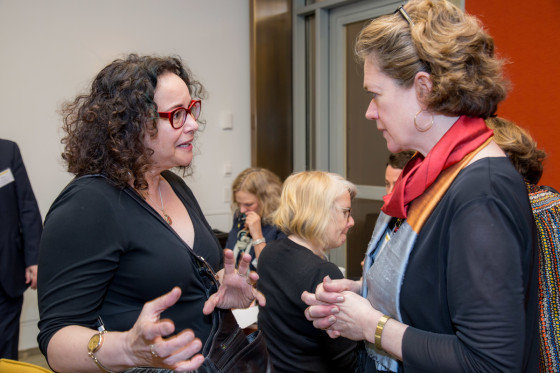
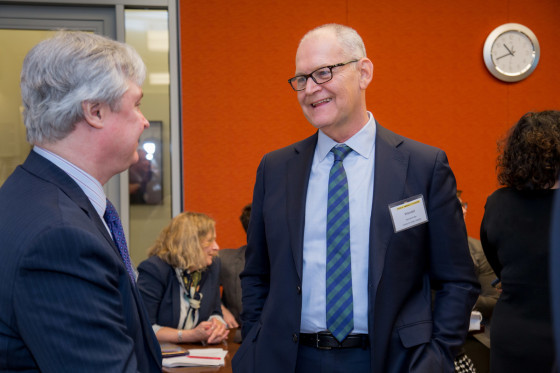
Photo credits: Margarita Corporan
http://www.margaritacorporan.com/